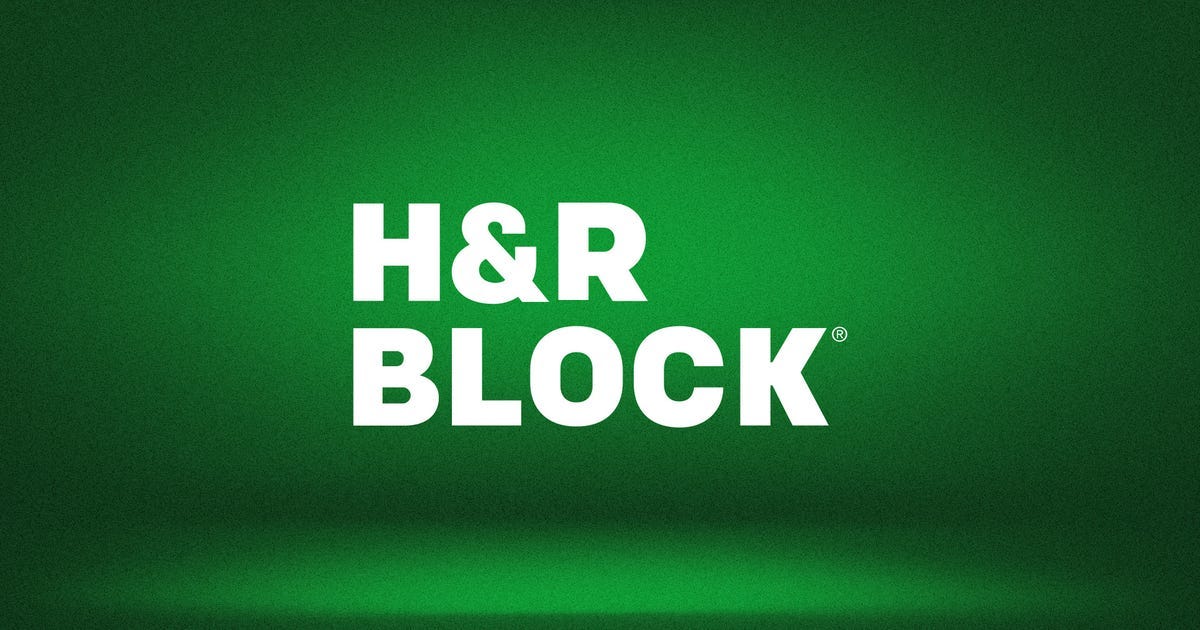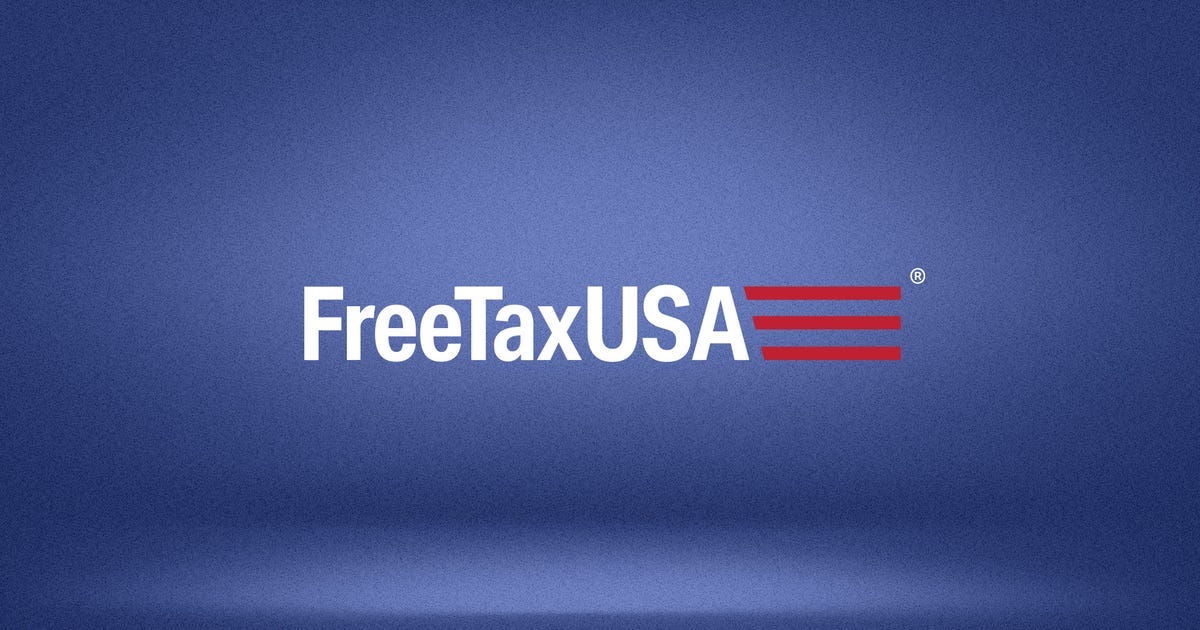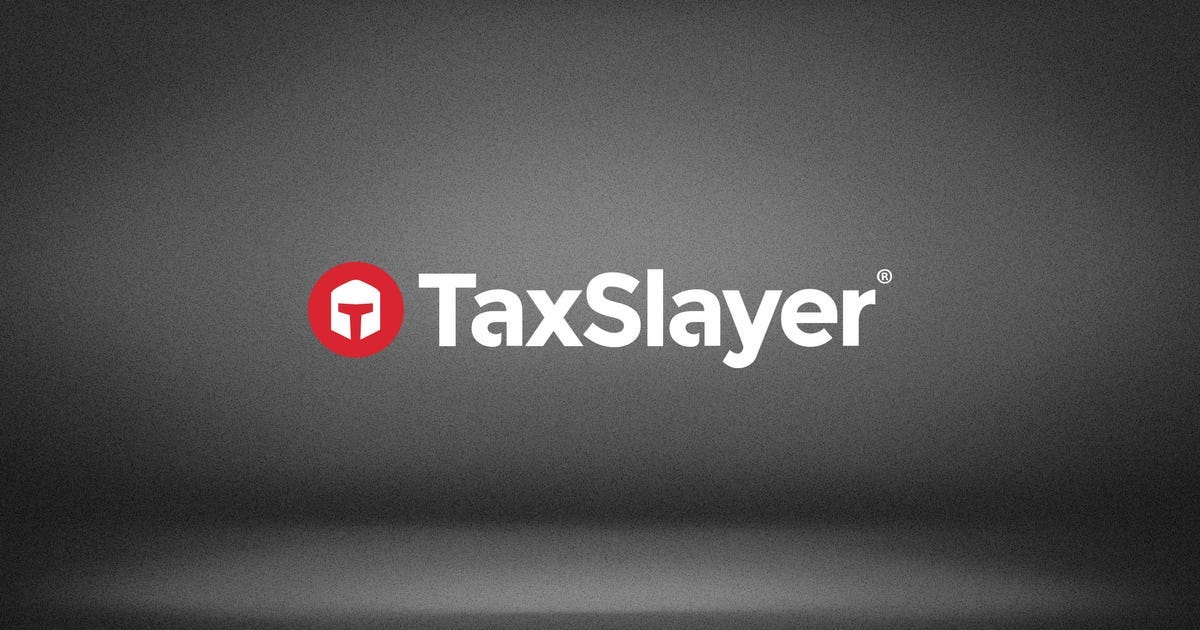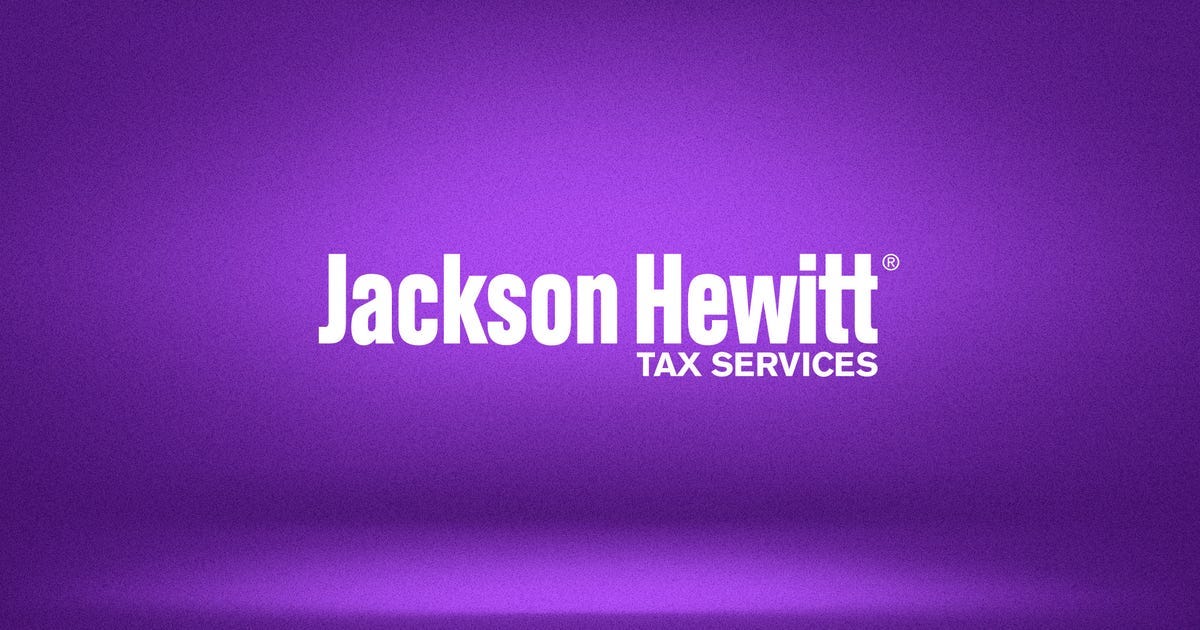This story is part of Taxes 2023, CNET’s coverage of the best tax software, tax tips and everything else you need to file your return and track your refund.
Taxes are due tomorrow, April 18 -- and if you haven’t filed your tax return yet, you can use online tax software to file before the deadline.
If you’re nervous about working through your tax return in time, online tax software can help guide you through the process, and answer common questions along the way. But if you’d prefer in-person help, you can also use online tax software to file an extension, so you have more time to book an appointment with a tax professional. But if you don’t have questions about your return and you’re not waiting on any tax forms, it’s worth trying to file before the deadline to avoid refund delays or potential IRS penalties.
We reviewed seven of the top tax software options and selected the options that provide the best value for the lowest price, offer an easy-to-navigate interface and make tax filing as painless as possible.
TurboTax by Intuit is our front-runner for good reason. The software combines tax expertise and an easy user experience with an accessible interface.
TurboTax guides you deftly through the process of completing your tax return, never asking for information you’ve already given or that doesn’t apply to your tax situation. When questions arise, information is quickly at hand.
Four TurboTax products -- Basic, Deluxe, Premier and Self-Employed -- cover the range of taxpayers. We recommend the Deluxe level for most filers if your taxes are even slightly complicated, but if you know you don’t qualify for most deductions or credits, stick with Basic for free.
Expert support from TurboTax Live can supplement any of the TurboTax products, as can TurboTax Audit Defense. TurboTax’s comprehensive benefits come with a higher price tag than other tax software, but peace of mind could be worth the cost.
- Free to $119 for federal* (without live support)
- Free to $59 per state filing** (without live support)
- $89 to $209 for TurboTax Live Assisted (state additional, free pricing ends March 31, 2023)
- $209 to $399 for TurboTax Live Full Service (state additional)
*Free filing is available for simple returns only; not all taxpayers qualify
**Up to $64 per state return with TurboTax Live Assisted and Live Full Service
&R Block compares well with our top pick, TurboTax, and it shines in particular for its Free Online version, which covers simple returns as well as deductions for student loans and tuition fees -- a perfect fit for filers without complicated tax situations who also want educational tax breaks.
While not quite as smooth as TurboTax, H&R Block features a well-designed, interview-style system that helps users sidestep potential mistakes. Help screens and FAQs are comprehensive, though not as easy to access.
H&R Block’s Online Assist provides virtual tax assistance from a professional online, including screen sharing to show exactly where you’re stuck.
A nifty photo capture lets you quickly upload your W-2 to H&R Block and get your tax return rolling. Its online software also lets you upload files like multiple 1099 forms, schedules A and C, gifts to charity and medical expenses, among a list of many items.
One big appeal of H&R Block is the existence of brick-and-mortar offices. If you decide midway through your online tax return that you’d rather not do it yourself, H&R Block has about 9,000 offices across the US to set up an appointment or drop off your taxes for a professional to complete.
- Free to $98 for federal*
- $0 to $49 for state
- $70 or more for live support (state additional)
*Promotional pricing
Cash App Taxes offers a fully free tax preparation option that doesn’t skimp on IRS forms and schedules. It provides users with one federal and one state tax return, completely free, with accuracy and maximum refund guarantees.
The lack of file importing and an unusual desktop login process might discourage some users from trying the service, but once you’re into the software it works like most programs: A simple, interview-style process collects information about your tax situation and uses it to populate IRS forms.
Because you’ll need to enter your information manually, we recommend Cash App Taxes to tax filers with a few forms and relatively simple tax situations. Cash App Taxes also has restrictions that might exclude some taxpayers: No multiple state returns, no foreign income and no option of married filing separately in community property states like California or Texas.
Cash App Taxes also lacks professional tax support, making it best for users confident in handling their own taxes. The software also requires the installation of the Cash App mobile app on a tablet or phone -- veteran users of the payment service who already have the app installed should give it a look.
Free
FreeTaxUSA is a mostly free online tax software option. Your federal returns are free (no matter how complicated your tax situation is), but you’ll need to pay to file state tax returns. It offers options for importing previous tax returns and filing an amended tax return. The Deluxe version includes priority live chat, customer support and access to its tax specialists and audit service. These tax professionals should be able to address all your specific income tax return questions -- from what paperwork you need to how to understand an audit notice and write a response to the IRS.
- Free for federal
- $15 per state filing
- $8 Deluxe version
TaxSlayer gives you no-frills tax preparation at a low cost -- its full-featured software will entice filers on a tight budget. Its free version may be too restrictive for many, but the top Self-Employed tier includes self-employment tax advice from a pro for much less than competitors.
TaxSlayer offers four levels of service -- Simply Free, Classic, Premium and Self-Employed -- that range from free to $60 to file a federal return. Simply Free is restricted to filers with less than $100,000 in taxable income and includes one free state return. The other paid tiers of TaxSlayer charge $40 for each state return.
TaxSlayer’s Self-Employed tier, our top pick for freelancers and gig workers, provides tax preparation support from a tax professional versed in self-employment taxes, as well as all the service features of the other plans, at $90 total for federal and state returns.
The interface and help content of TaxSlayer may not be as polished as other top competitors, but its bargain prices for self-employed filers make it an attractive option for those comfortable completing their own tax returns.
- Free to $60 for federal
- Free to $40 per state filing
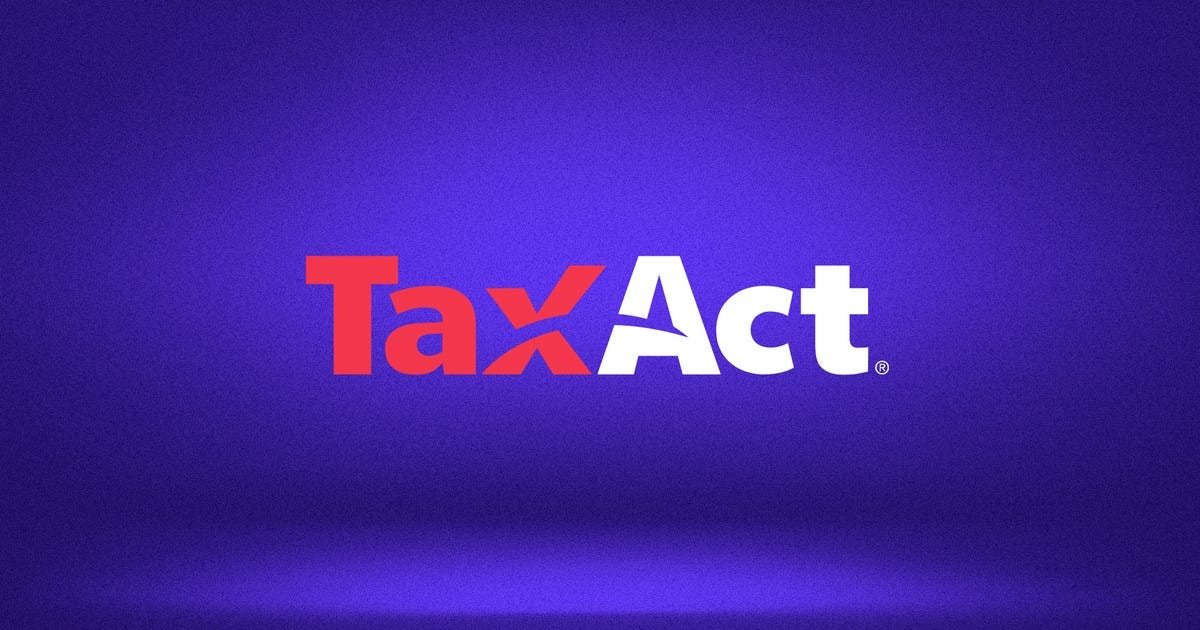
TaxAct
TaxAct’s online tax filing software is straightforward and more affordable than top competitors. Its major distinction is its $100,000 Accuracy Guarantee and Maximum Refund Guarantee, which promise to get you an accurate refund and the maximum allowable by law. If it fails to do so, TaxAct will refund you up to $100,000 to cover the difference between your actual and potential refund, your software costs and any associated legal or audit costs.
It doesn’t have the feature set of other online tax software options, but TaxAct offers comparable service at a discounted price. Its standout feature is a Deduction Maximizer that reviews your completed return for possible tax deductions you may have missed. TaxAct’s professional tax assistance service Xpert Assist is also available for an extra fee.
- Free to $95 for federal
- $40 to $55 per state filing
- $40 to $135 for Xpert Assist
While not quite as intuitive or flashy as TurboTax or H&R Block, Jackson Hewitt’s flat-rate of $25 for one federal return and unlimited state returns is tough to beat. Unlike most competitors, which offer different tiers of service depending on your tax situation, Jackson Hewitt Online lets you file for one price, regardless of how complicated your taxes are.
Jackson Hewitt Online offers free IRS audit assistance and a Lifetime Accuracy Guarantee® to protect against unexpected penalties or interest. Its stripped-down service comes with some drawbacks, though. Its website lags behind competitors -- there’s no option to upload files or tax forms -- and it’s also light on support.
And if you want more one-on-one attention, you can file at a participating Walmart location or visit one of its offices to file with a tax pro (prices vary depending on your filing situation and state of residence).
- $25 for federal and unlimited state filing
What is tax software and how does it work?
Online tax software can help you file your taxes by guiding you through the process and double-checking to make sure you’ve filled out all of the necessary tax forms for your filing status and situation.
Most tax software options offer one of two types of systems: interview-based filing or form-based filing. Interview-based filing prompts you to answer questions about your finances and then inputs your answers into the correct tax forms. This is best if you’re new to filing your taxes or if you want guidance along the way. Most tax software, TurboTax, TaxSlayer and H&R Block, for instance, use a type of interview-style interface.
The form-based filing option mirrors most traditional tax forms and can be a bit complicated if you’re not familiar with tax forms. Some programs let you toggle back and forth between interview and form, just in case you want to check your figures.
Who should use tax software?
Tax software can simplify the tax filing process and guide you through the process. It can also help you get your refund sooner. “Plan on filing electronically,” says Mark Steber, chief tax information officer at Jackson Hewitt. “And, if you’re owed a refund, make sure it’s electronically deposited instead of getting a paper check in the mail -- not doing this electronically can cause delays with the IRS and increase the risk of theft of your refund.”
While online tax software can help you file your tax return faster -- and receive your refund even quicker -- each software option has its own benefits and drawbacks to consider.
If you have a fairly simple tax return, meaning you have a W-2 and don’t need to itemize your taxes, you may find tax software easy and helpful. It’s also a great option if you can confidently navigate the tax filing process on your own, and already know which deductions or credits you plan to claim.
Who shouldn’t use tax software?
While tax software can also help you tackle more complicated returns -- those with self-employment income, itemized deductions and multiple real estate properties and other investments -- you might find it difficult to navigate even the most user-friendly tax software. In this case, we recommend reaching out to a certified public accountant or visiting a tax preparer in person.
And if you’re worried it’s too late to get professional tax help, Steber says there’s still time, but you should schedule an appointment now. “Most CPAs and tax professionals will be open until the last minute, but taxpayers risk not getting an appointment if they don’t schedule it in advance.”
You also don’t want to pay for tax software before checking to see if you qualify for free filing options. If you have a simple tax return, you may be able to file your taxes with online software for free. Some tax software, like FreeTaxUSA or TaxSlayer, offer free filing options for simple returns. If your adjusted gross income is under $73,000 for 2022, you may also qualify for free tax filing under the IRS Free File program. Seniors, those who speak limited English and filers with disabilities may also qualify for free filing services through the Volunteer Income Tax Assistance program or Tax Counseling for the Elderly.
How to choose the best online tax software
Each tax software option works a little differently. You should compare different tax software based on your filing situation. Some other factors to consider include:
- Ease of filing: Tax laws are constantly changing, so the less you have to worry about when filing, the better experience you’ll have.
- Tax forms offered: Not everyone has the same filing needs. If you need access to more tax forms, you’ll want to make sure the tax software option you’re considering offers all of the forms you need.
- Price: Many tax software programs have some level of free filing for basic returns, but charge for more complicated tax filing situations, state tax returns or customer support and tax assistance. Compare costs among your filing options to make sure you don’t overpay. Once you’re paying more than a couple hundred dollars for tax software, it might be more helpful -- and less expensive -- to reach out to a tax professional.
- Customer support: If you’re stuck and need extra help, customer support is vital to filing an accurate return. Some tax software companies have different tiers of customer support, including in-person help or virtual assistance. Review customer support options, like live chat and call availability before narrowing down your choice.
FAQs
There are two main ways to file your taxes for free. The first is through the IRS “File Free” program, which includes private companies that provide their services for free in partnership with the IRS. To qualify, you need to earn less than $73,000 in adjusted gross income.
The second is through the free programs of non-alliance members, like Intuit’s TurboTax, H&R Block and Cash App Taxes. These private services offer free products for those with simple filing situations, and as long as you don’t have complications like investment income or rental property income, you can stick with the free products all the way through filing.
Note, however, that Intuit and other companies will often try to upsell you on other products throughout the process. Before signing up for a higher-tier product you hadn’t planned on, make sure you really need it.
Almost all of CNET’s best tax software selections for 2023 include free options for simple tax returns. However, some of those free options only include your federal tax return -- you’ll occasionally need to pay extra to file state tax returns.
TurboTax, H&R Block, TaxSlayer and Cash App Taxes all provide free tax-filing services that include one federal tax return and one state tax return. FreeTaxUSA’s basic plan is free for federal and $15 for unlimited state returns, whereas TaxAct’s free plan requires $40 to $55 per state tax return.
Be careful to check for restrictions before you start the process of using free tax software at any of the providers. For example, TurboTax’s Basic plan only allows simple tax returns with 1040 forms -- no unemployment income, stock sales or any itemized deductions like mortgage interest. H&R Block’s Free Online adds a few more forms like Schedules 1 and 3, but you’ll still need to take the standard deduction.
Even Cash App Taxes, which earns CNET’s award for Best Free Tax Software, doesn’t cover absolutely all tax situations. While it does include advanced tax forms for self-employment, rental property, stock sales, small business income and the child care credit, it doesn’t allow for foreign earned income, the health coverage tax credit or income from an estate or trust (Form K-1).
Federal tax returns for 2022 are due on April 18, 2023. Most state returns are also due on April 18, but some states have different deadlines. If you need more time to file, you can request an extension with most online tax software by April 18. If your extension is approved, you’ll have until Oct. 15, 2023, to file your 2022 taxes.
“Filing an extension only gives taxpayers more time to file – not more time to pay,” says Steber. “In most cases, it takes just as long to file an extension with the supporting documents as it does to file the return itself. It’s only worth filing an extension if you’re truly missing documentation.”
If you’re considering filing an extension because you can’t pay your full tax bill, Steber advises against this move. Instead he suggests setting up an installment plan with the IRS.
When you file only a single W-2 from an employer, it’s considered a simple tax return. With a simple return, you won’t be itemizing deductions, claiming investment income or rental property, reporting freelance income or claiming business expenses like a home office.
Companies like Intuit and H&R Block explain the added complexity commensurate with their higher-tier products, so if you aren’t sure, double-check their lists before purchasing. You can also start filing with a free return in most cases and upgrade your service level if needed.
The beauty of well-designed tax software is that most filers won’t need to pay extra for expert help. All of the answers you need should only be a few clicks away, and if you need technical assistance (help with the software, not tax-related issues), support should be easily accessible.
If you find yourself constantly wanting to speak with a human tax expert or if you know your tax situation is complicated, you may be better off selecting tax software with tax expert support or simply hiring a CPA, or certified public accountant, on your own.
Working with a CPA for your tax filing will cost $200 to $500, depending on the complexity of your return -- how many schedules and extra forms need to be completed -- and where you live, according to the 2020-21 Fees Practices Survey released by the National Society of Accountants. Each additional schedule, for things like rental income or investment gains, can cost around $100.
If you have self-employment income, itemized deductions, investments or other complicated tax situations, the extra cost is likely to be worth it. It can also be easier to send off your forms to an expert and know they’ll take care of everything. Remember that the extra amount you’re paying in fees could get you a better return, making the upfront cost a smart investment.
Keep in mind, however, that it depends a lot on your individual filing situation, your withholdings and your tax bracket. As good as many software programs are, a human expert is often the way to go.
Methodology
CNET reviews tax software by comparing products across set criteria. We use the software to prepare personal tax returns, examine tax products’ terms and offers, communicate with software representatives to resolve questions about products, compare feature sets, and analyze software for its effectiveness in common tax situations.
We consider the features and functionality of the tax preparation software, the user experience, the software interface, website performance, quality of help and support, and the value based on price. We are also looking for and evaluating specific features, including file importing or photo capture of forms, number and type of available IRS forms and schedules, contextual help, desktop and phone/tablet compatibility and syncing, professional tax assistance, maximum refund and accuracy guarantees, live support and security protections.
More tax software advice
- Best Free Tax Software Alternatives
- When to File Taxes: Everything to Know About 2023 Deadlines
- Best Tax Software for Freelancers, Gig Workers and Self-Employed
The editorial content on this page is based solely on objective, independent assessments by our writers and is not influenced by advertising or partnerships. It has not been provided or commissioned by any third party. However, we may receive compensation when you click on links to products or services offered by our partners.









